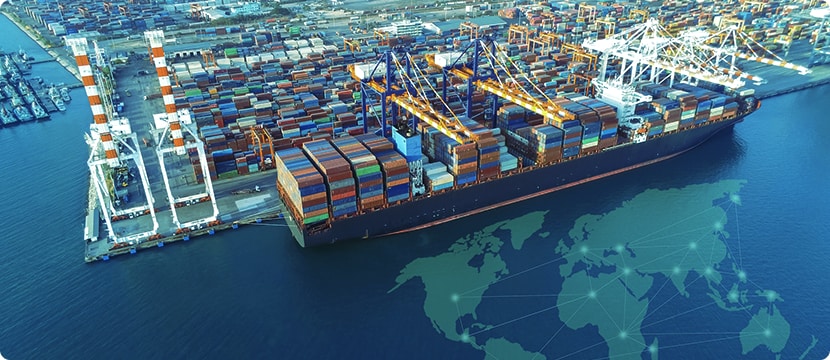

As digital-savvy consumers’ expectations and buying habits evolve, consumer-packaged goods (CPG) companies must prioritize omnichannel growth to remain competitive. This means managing inventory, increasing investments in omnichannel, and streamlining supply chain operations to deliver an unmatched customer experience. Real-time data flow and visibility are crucial to success, and businesses must effectively manage inventory across all channels. However, failing to manage consistency across channels could lead to lost customers and added complexity to the CPG industry’s supply chain operations. This article will delve deeper into the importance of an efficient omnichannel strategy for CPG companies and explore ways to achieve success in this space.
As we move into 2023, consumer-packaged goods (CPG) companies are challenged to meet growth objectives while concurrently addressing rising input costs. E-commerce continues to be a significant growth driver even as sales in some categories return to pre-pandemic levels, albeit settling at a slightly higher level. With today’s digital-savvy consumers’ evolving expectations and buying habits, the time available to supply chain functions for analysis and action is also shrinking rapidly. Given the cost considerations, unlike in the past, organizations no longer have the luxury of planning each channel in a silo.
So, what’s driving the agenda for supply chain leaders in 2023?

Cost containment:
First and foremost, recessionary trends have made taking out costs, particularly around inventory and transportation, critical. Note that inventory and transportation costs always move in opposite directions.
Omni-channel investments:
Second, past investments in omnichannel commerce were primarily on the front end: on the digital, on websites and e-commerce enablement. To maximize benefits from those investments, consumer demand must be fulfilled entirely.
Network re-structuring is costly and time-consuming:
Since the late eighties, low-cost manufacturing hubs in Asia-Pacific that the fashion and apparel industry has relied on not only offset shipping costs but also higher inventory costs typically associated with long lead times. Post-pandemic, companies are mitigating supply risks by moving select manufacturing near-shore. While this counter-intuitive move certainly increases manufacturing costs, to what extent lower transportation costs will compensate it is yet to be seen especially given the volatile nature of consumer demand.
Lack of visibility:
Enterprises have long recognized the importance of end-to-end visibility across their supply chain ecosystems. Different functions within an enterprise often have their source of such information, resulting in only one version of the truth. Add to this data latency, and you have a perfect recipe for each function, coming to a different conclusion on what to produce, how much and when. The fact that an omnichannel consumer could expect to be serviced virtually anywhere (and whose location remains unknown until order placement) only makes it worse to determine where to position inventory.

Near-real-time Sales Visibility:
To address shifts in consumer behaviour, traditional demand planning that has long served to predict sales over a medium-to-long term needs to be augmented by short-term demand sensing capabilities to fulfil demand here and now. This also means getting visibility to market action in near real-time. Knowing yesterday’s sales today is no longer a nice-to-have capability but a business imperative.
Real-time inventory visibility:
This is yet another driver for success. As much as it is essential to know the rate of sales, a brand’s ability to meet such demand is critically dependent on knowing how much inventory exists across its entire network. In real-time! By being inherently associated with a specific location, real-time inventory visibility is no longer limited to use in the planning realm but rather for executing against individual consumer orders.
Unified Repository:
Recognizing that omnichannel blurs the boundaries between physical and online, bringing together sales and inventory data in real or near-real time from across channels is crucial in breaking those channel silos. Consequently, one’s ability to fulfil orders without looking at the ‘colour’ of the inventory gets maximized. Unified data repositories can only be bested by making such information available across your entire network.
Business networks:
By now, it must be evident that no two businesses, especially those part of the same value chain, can be successful independently of the other. Such success depends not only on collaboration between the maker and the seller but also includes a larger ecosystem of logistics and financial enablers, each needing access to the same information that brand manufacturers and retailers operate from. The result is the creation of a business network whose limits are only determined by the participants of such a network.

Order anywhere, fulfil from anywhere:
The conventional approach of positioning inventory based on expected demand has become increasingly challenging in today’s fast-paced retail landscape. To address this, businesses should explore new approaches to fulfilling orders based on shopper preference and optimal fulfilment costs. This requires businesses in the network to fulfil a customer order regardless of inventory ownership and reconcile later, necessarily implying collaboration across the network.
Reverse Logistics:
Omni-channel commerce is as much about driving the consumer’s buying experience as it is about when they return a product. The same principle that was used to execute a fulfilment from the most optimal location would now be used in the other direction. i.e., enhance shopper convenience by allowing her to return goods at any store nearby, whether owned by you or a partner.
Product Traceability:
For food and beverage companies who are constantly faced with the possibility of product recalls, the ability to track products at a pallet/batch/lot level in real-time becomes a key differentiator for those minimizing recall costs and staying compliant with local statutory requirements and those that don’t. Depending on the size of a recall, it could mean tens or even hundreds of millions of dollars that would otherwise impact a company’s financials.
Loved what you read?
Get practical thought leadership articles on AI and Automation delivered to your inbox


Loved what you read?
Get practical thought leadership articles on AI and Automation delivered to your inbox
The traditional value chain paradigm is shifting towards value networks or multi-enterprise collaboration networks, which emphasize many-to-many connectivity. Being part of such a network can help brands uberize delivery of products and services and enable a superior shopper experience. A brand becomes the fulcrum bringing together various players such as retail stores, logistics players, suppliers and customers.
Disclaimer Any opinions, findings, and conclusions or recommendations expressed in this material are those of the author(s) and do not necessarily reflect the views of the respective institutions or funding agencies








